
As a general rule, you should start feeding colonies in mid August and aim to finish by late September. As the nights draw in and the cooler autumn temperatures have us reaching for our woolly jumpers, so bees are preparing for their winter.
Bees don’t hibernate as individuals but in a way, the colony as a whole can be thought to do so. To have the best chance of surviving the winter, the bees need to be healthy, be headed by a properly mated and laying queen, have sufficient accessible food stores and be in a watertight cavity (hive).
As autumn approaches, forage sources disappear, and the colony begins to form its winter cluster. With brood, the bees maintain the centre of the cluster at brood nest temperature; slightly below without brood. The cluster’s packing density is adjusted according to the temperature of the outside layer. The cluster forms around the latest brood nest and then, as the bees consume food, it moves upwards. It is important to ensure that bees have food above their heads for winter. As bees in the centre get hungry, they move to the outside for food, displacing those who have fed, setting up a slow moving convection current.
YOUR COLONY NEEDS TO BE HEALTHY
The main killers in the winter or early spring are Nosema and Varroa. Nosema affects the bee’s gut and shortens its life by preventing proper food digestion. If they survive to the spring, affected colonies can build up slowly, dwindle or even die. The best way of dealing with Nosema is to transfer the colony onto clean comb, ie, fresh foundation or drawn comb that has been fumigated with an 80 per cent solution of acetic acid to kill the spores. Bear this in mind for any affected colonies next spring. There are no authorised treatments for Nosema.
As the brood nest shrinks, so does the number of cells in which varroa mites can breed.
This story is from the September 2024 edition of The Country Smallholder.
Start your 7-day Magzter GOLD free trial to access thousands of curated premium stories, and 9,000+ magazines and newspapers.
Already a subscriber ? Sign In
This story is from the September 2024 edition of The Country Smallholder.
Start your 7-day Magzter GOLD free trial to access thousands of curated premium stories, and 9,000+ magazines and newspapers.
Already a subscriber? Sign In
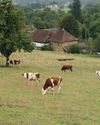
How to Buy a Smallholding in France- Long-time smallholder Lorraine Turnbull looks at the practicalities of moving to rural France
Aspiring smallholders are continually thwarted by the prices of smallholdings and property with land located within the UK. Even the humblest croft in Scotland comes with a substantial price tag and conditions which would make even an adventurous wannabee consider carefully. But all is not lost. For those willing to take the adventure of a lifetime, there is always Europe, and one of the most popular places is France.

Meet the Bournemouth goats and their supporters
These capricious animals are hard workers preserving the natural habitat
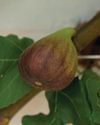
Still warm enough to sit outside with a Pizza
Henrietta Balcon uses fresh figs to create an unusual dish at Harvest time
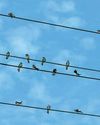
Goodbye to the birds of spring and summer
If you look and listen you might be able to see them preparing to leave says The RSPB
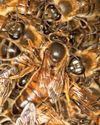
Get ready for the colder weather in the warmth of late summer
Claire Waring advises on doing the best to make sure your colonies survive until next spring
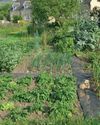
Preparing the Veg Patch for Winter
Lee Senior says, a well-run plot can excitingly continue to produce good quality, tasty, fresh food for much of winter
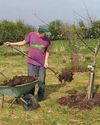
Time to prepare to plant your orchard
Wade Muggleton, smallholder and author of The Orchard Book, shares his practical experience so you can create your own fruit collection
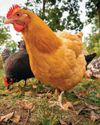
Choosing feed for the autumn
As autumn approaches, Joanna Palmer, nutritionist at the Smallholder Range, offers advice on choosing the right feed to support your adult birds through their annual moult and ensure your young birds grow and finish well at this time of the year.
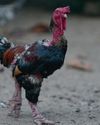
Vet advice from an experienced poultry vet
Reflecting on how much the humble hen has helped people world wide plus advice on stopping the scourge of red mite
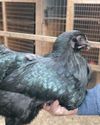
Give your hens some support
Paul Donovan looks at the right and wrong ways of handling birds